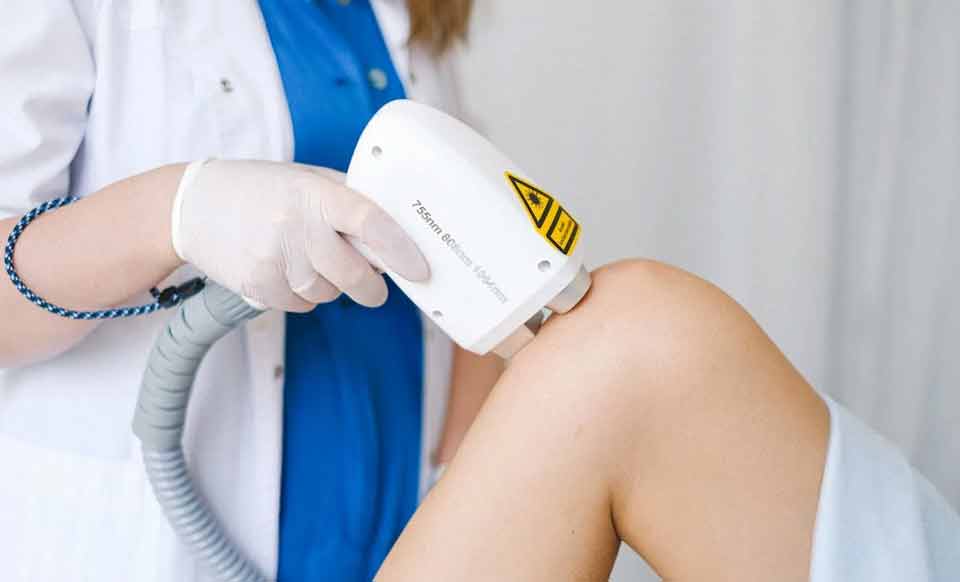
TENS therapy for inflammation: A safe and effective alternative for chronic pain relief
November 19, 2024
Acupressure Therapy: Unlocking the Body’s Natural Healing Energy
January 16, 2025Laser therapy for type 1 diabetes: Exploring the potential of LLLT for blood sugar control
Diabetes Mellitus Type 1 (T1DM) remains one of the most challenging chronic conditions to manage. Characterized by the body’s inability to produce insulin, individuals with T1DM rely on lifelong insulin therapy to control blood glucose levels. However, a growing body of research is exploring non-invasive complementary therapies that can support or enhance conventional treatment approaches. One such promising method is Low Level Laser Therapy (LLLT)—also known as Photobiomodulation Therapy (PBMT).
A compelling case report published in 2008 in the journal AIP Conference Proceedings documented the effects of LLLT on a 48-year-old man with Type 1 diabetes. This patient received 810 nm wavelength laser treatment over a series of sessions and experienced significant reductions in blood glucose levels. Even more impressively, his insulin requirements were progressively reduced and eventually discontinued during the treatment period. While this is a single case study, the results were substantial enough to warrant further investigation into LLLT’s potential as a supportive therapy for diabetes.
Understanding LLLT: What is it and how does it work?
Low Level Laser Therapy (LLLT) uses near-infrared light at specific wavelengths (in this case, 810 nm) to stimulate cellular activity. Unlike high-intensity lasers used in surgery, LLLT delivers gentle, non-thermal light energy to tissues, triggering biological responses at the cellular level. It is often used for pain relief, inflammation control, wound healing, and now—potentially—as a metabolic regulator in conditions like diabetes.
In the 2008 case study, LLLT was applied to specific body areas daily for 3 weeks, followed by weekly sessions over the next 4 weeks. The goal was to test whether consistent light stimulation could affect glucose metabolism, insulin regulation, and long-term blood sugar markers such as HbA1c.
What the case study showed
The results were striking. Over the course of the therapy:
- The patient’s glycaemia (blood glucose levels) gradually decreased.
- Insulin dosages were progressively reduced and eventually stopped.
- HbA1c levels (which reflect long-term glucose control) also declined, indicating sustained improvement.
- The patient remained under close medical supervision throughout, ensuring safety and accurate monitoring.
This case provides encouraging evidence that LLLT may influence glucose metabolism, possibly by enhancing mitochondrial activity, improving cellular energy use, or affecting inflammatory pathways related to insulin sensitivity.
Why this matters
T1DM is typically managed through daily insulin injections, blood sugar monitoring, and dietary control. While these are effective, they are also invasive, costly, and demanding. The idea that a non-invasive light-based therapy could complement or even reduce dependence on insulin therapy is groundbreaking—especially for patients struggling with insulin management or those experiencing side effects.
Moreover, T1DM patients often experience complications like neuropathy, poor circulation, and wound healing difficulties, all of which LLLT has already been shown to help manage. This adds even more value to considering it as part of an integrative care plan.
Scientific considerations and next steps
It’s important to note that this was a single case, and while the results are promising, they are not enough to draw universal conclusions. The researchers themselves emphasized the need for further research using larger patient groups and standardized protocols.
However, this case supports prior findings and strengthens the hypothesis that targeted LLLT applications can aid in metabolic regulation for diabetic patients. As interest in photobiomodulation grows across disciplines—especially in sports medicine, neurology, and chronic disease care—it’s likely that more clinical trials focused on diabetes will emerge in the coming years.
A non-invasive future for diabetic care?
For now, insulin remains the gold standard in Type 1 diabetes management. But innovative therapies like LLLT are showing exciting potential in reshaping how we think about chronic disease support—especially for patients seeking non-pharmaceutical, low-risk adjunct treatments.
If you or someone you know is managing diabetes and curious about LLLT or photobiomodulation, it’s important to consult with a qualified healthcare provider. Treatments should always be guided by evidence, experience, and supervision.
Final thoughts
The 2008 case study may only be one step on a longer journey, but it highlights the potential for light-based therapies to transform diabetes care. With the right research and clinical validation, LLLT may one day become a powerful tool in helping patients gain better control over their health, reduce medication dependence, and improve overall quality of life.




